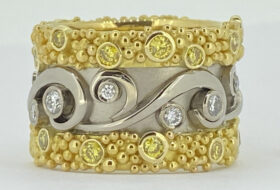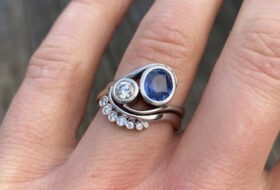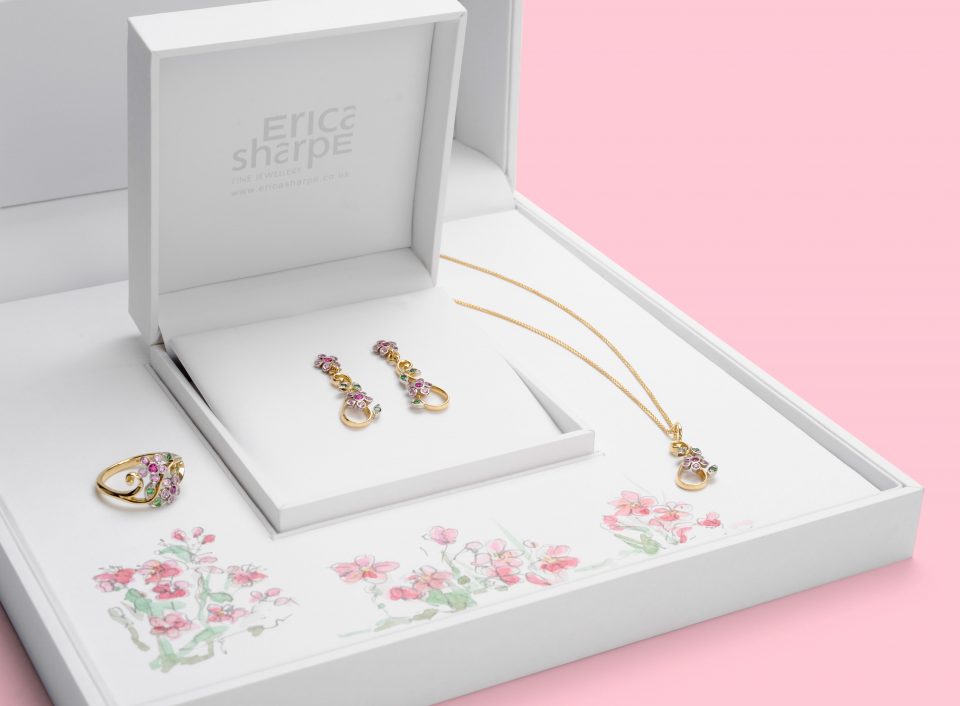Ruby is a beautiful gemstone known for its vibrant red colour and exceptional beauty. It is the birthstone for July and also the gem that represents the 40th wedding anniversary. I am always excited to receive a commission for a ruby wedding anniversary.
One exciting commission I did recently was a new ruby ring, with the gold sourced from the customer’s family jewellery: a signet ring with sentimental value, and an antique zodiac bracelet in gold. Fine quality rubies over a carat are rare and highly priced which can be an issue in designing jewellery within a reasonable budget. For the 40th wedding anniversary ring, I designed a ruby flower motif as the focal point, with seven of the highest quality round rubies making the petals and centre of the flower. This gave a good spread of bright red without having the bulk and prohibitively high cost of a single large stone. The contrast of bright emerald ‘leaves’ at each side worked well, and the use of platinum settings and a fine platinum ‘rail’ each side completed the look.
The colour of rubies
The strong clear colour of ruby is a designer’s dream when it comes to mixing with other gemstones, and with coloured golds too. The ruby can sit just as well in yellow, rose or white gold. Depending on the shade of red, it can work well with greens (emerald and green garnets), blues and the other colours that occur in sapphire such as pink, yellow, green and orange.
Rubies are a distinctively coloured gem formed of the mineral called corundum. All the sapphires ( blue, yellow, pink, green) are a type of corundum, with ruby being the name for the red version. Rather like water, corundum in its purest form is clear. With the addition of certain elements or chemicals (imagine different coloured inks dropping into clear water) the clear crystal can become one of many colours if these elements are present as it forms. When corundum forms in earth, these trace elements become part of the mineral’s crystal structure and cause variations in its colour.
Chromium is the trace element that causes ruby’s red colour; its depth and shade of colour depends on how much chromium is present – the more chromium, the stronger the red colour. Chromium can also cause fluorescence ( the emission of light when light is shined onto it) , which adds to the brightness of the red colour. In my children’s words, a ruby ‘glows up’ when it is in sunlight!










